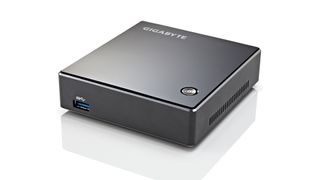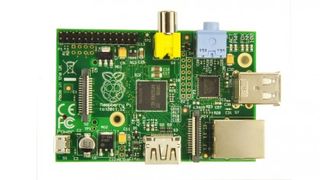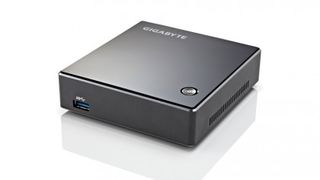Best mini barebones PCs: 5 top options to build your own media PC
A media streaming box can do a lot, but a barebones PC can do more

The PC industry has been in decline for a while now, but certain parts of the market are on the up as consumers change how and where they using PCs. Times have changed, with computers breaking out of the office and study to invade our living spaces.
Media streaming boxes have become incredibly popular by filling the gap for users wanting that Smart-TV experience. But plenty of people are still looking for a more multi-talented home media solution for the living room. Ideally, it would give them unlimited access to full PC functionality, including media playback or streaming and perhaps even high-end gaming.
For this, old tower PCs are often recycled, but they can be space-hogging eyesores, especially next to the svelte HD TVs that have become the focal point of home entertainment. Enter, the barebones PC.
What to look out for
Why you can trust TechRadar
If you're thinking of using a mini barebones PC for full HD video, then a powerful processor such as one based on i7 architecture is highly desirable.
If you want the full high-definition PC gaming experience available from the comfort of your sofa, then look at one of the slightly larger models that have space to accommodate a good graphics card. Just remember it's probably going to be in your front room so you don't want it sounding like a mini vacuum.
Most barebones PCs will need a hard- or solid-state drive. We recommend a HDD for media streamers and/or an SSD for gaming rigs. You'll also need to add some memory - 4GB being the suggested minimum, while gamers should bump things up to at least 8GB. Some models will also need a new processor, but don't fear - we've made some component recommendations for each of the PCs below.
Think about connectivity. What sound system (if any) do you have? Do you need optical audio output? How will you connect the PC to your TV or monitor? You might also want to think about a wireless keyboard with integrated touchpad, as well as either a media remote or a wireless gaming controller.
Finally, don't forget you'll need to decide on an operating system – Windows is the standard go-to option, or you could consider a Linux distribution such as Ubuntu.
1. The budget barebone
Raspberry Pi - from £31 (around USD $50, AUD $56) - Farnell
Read TechRadar's full review of the Raspberry Pi

The Raspberry Pi, or RasPi (as it has become affectionately named) has become quite a sensation for hackers, makers and educators everywhere, selling well over one million units to date. It's a low-powered PC on a single tiny board, which means it can be used for everything from turning your TV smart with the help of XBMC, to being the centre of a retro gaming revival by emulating classic consoles. Despite its diminutive size, the model-B Pi has plenty of ports: 2 USB, Network, HDMI & Composite video and Micro-USB power.
There's a huge community behind the Raspi, with clubs popping up around the country. Raspberry 'Jams' are held around the world and have fuelled their introduction into schools, thanks in part to Google's gift of 15,000 of them to lucky British classrooms.
What to add on
To get you're Pi on, choose from Raspian, RaspBMC or RetroPie operating systems, then consider the following crucial extras:
- 8GB SDHC card (class 6 or higher).
- Wired or wireless keyboard.
- Network cable or USB Wi-Fi adaptor.
- USB Power cable, HDMI cable.
2. The 'just enough' PC
Gigabyte Brix 1037 - from £129 (around USD $210, AUD $232) - Ebuyer
Read TechRadar's full Gigabit Brix review

The Gigabyte Brix is an ultra compact, yet fully fledged PC that comes in a variety of forms, starting with a dual-core 1.8GHz Intel Celeron, with a capacity for up to 16GB of RAM and an mSATA SSD slot for up to 480GB of internal storage. In the box is a VESA adaptor, so if your TV or monitor isn't wall-bound you can mount it right on the back.
Get daily insight, inspiration and deals in your inbox
Get the hottest deals available in your inbox plus news, reviews, opinion, analysis and more from the TechRadar team.
Most Popular

